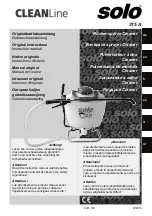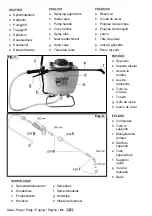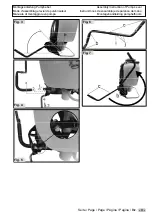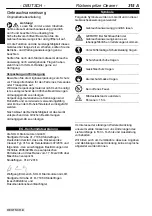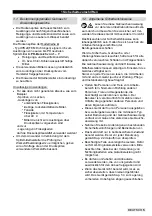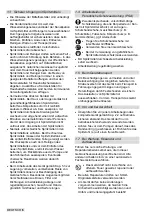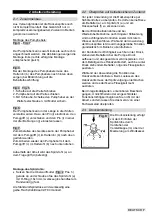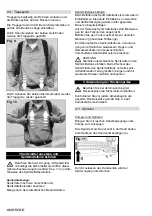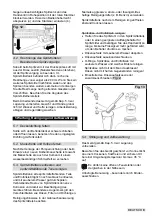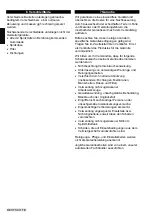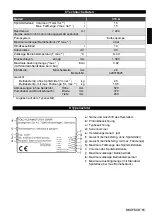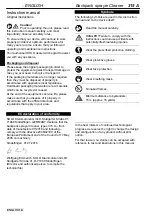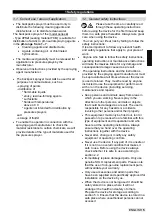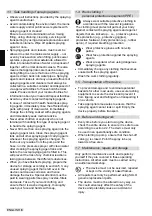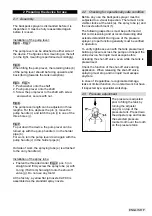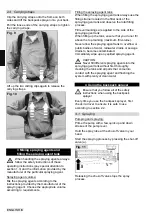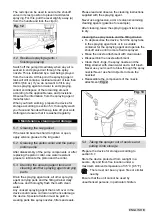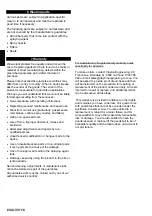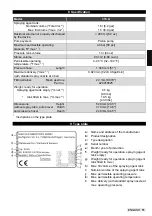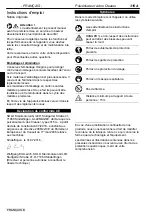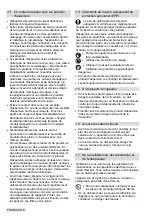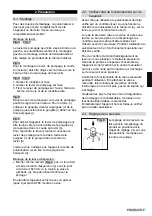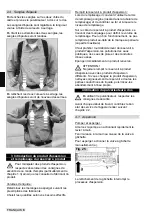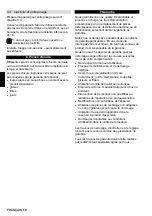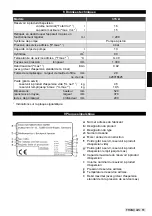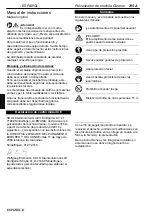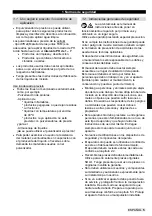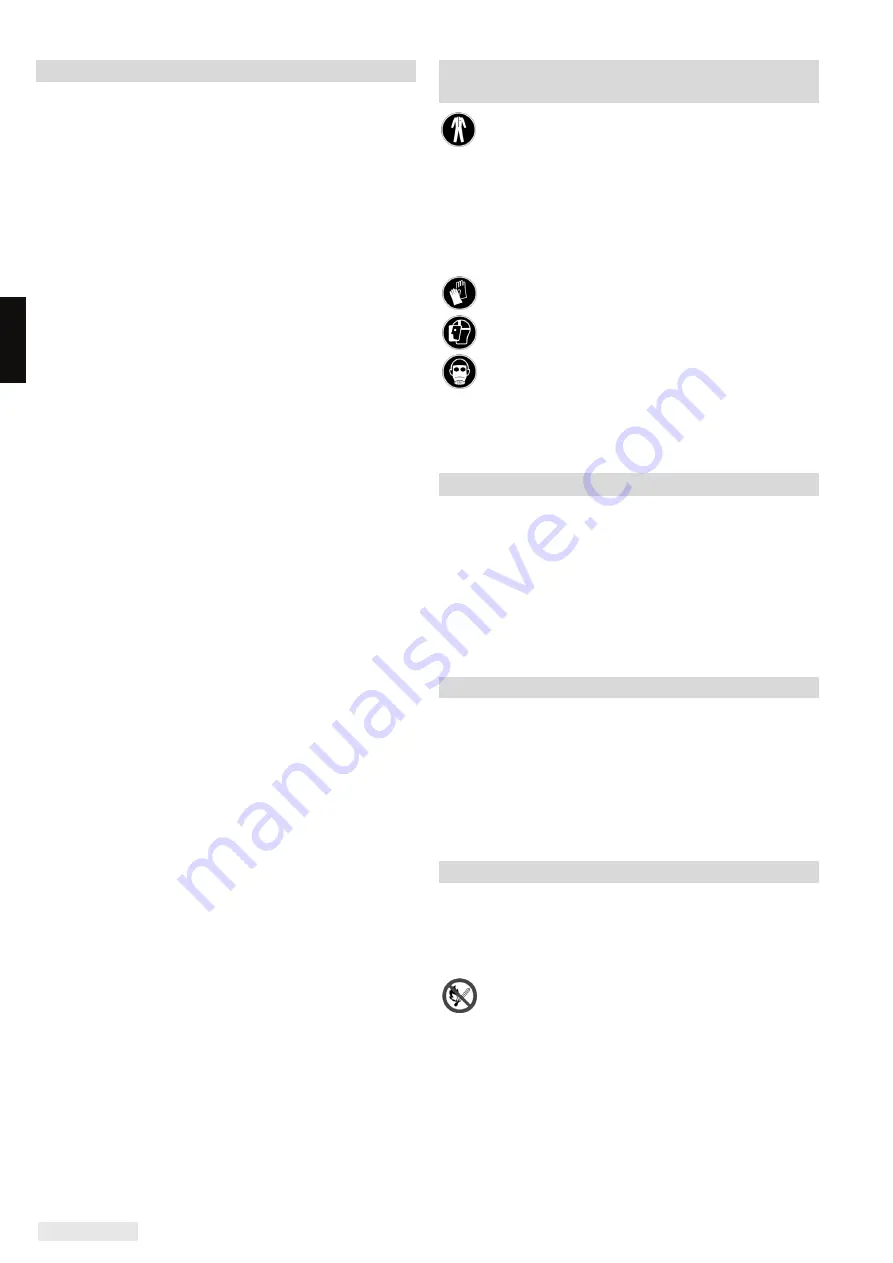
ENGLISH
6
1.3 Safe handling of spraying agents
Observe all instructions provided by the spraying
agent manufacturer.
Avoid contaminating the environment, the mains
water supply and/or public sewer systems with
spraying agent or cleaner!
Ensure to avoid contamination when mixing,
filling, using, draining, cleaning, servicing and
transporting by using adequate procedures and
suitable containers. Wipe off spilled spraying
agent at once.
Spraying agents and cleaners must never be
allowed to enter the mains water supply – not
even by back-suction when filling, public sewer
systems, sprayed onto wastelands, allowed to
drain into natural bodies of water or disposed of
together with normal domestic waste. This also
means that appropriate care must be taken
during filling to ensure that none of the spraying
agent is drawn back into water pipes. Spraying
agents and cleaners and any unused leftovers of
spraying agents and cleaners must always be
collected in a suitable container and disposed of
via approved facilities for household chemical
waste. Please contact your local authorities for
information about your nearest disposal facilities.
Avoid any direct contact with spraying agents.
In case of contact with health hazardous spray-
ing agents, immediately rinse the affected body
parts with plenty of clean water, immediately
change the clothing soaked with spraying agents
and immediately seek medical advice.
Never allow children or anybody who is not
familiar with handling this type of spraying agent
to handle the spraying agent.
Never fill more than one spraying agent into the
spraying agent tank. Clean the spraying agent
tank and all other spraying agent carrying parts
whenever the spraying agent is changed. To
flush out any residue from the pump and the
hose, run the pressure sprayer with clean water
after cleaning the spraying agent tank and
before the next spraying agent is filled in. This
will prevent the risk of any chemical reactions
taking place between the different substances.
When you have finished spraying, prepare the
device for storage according to section 5.3, any
unused spraying agent that is left over in the
device could cause corrosion and hence
damage the device. Special attention must be
paid to wearing parts like spray nozzles, filters
and seals. Take off your work clothing and
ensure that it is washed regularly, thoroughly
wash your face and hands with soap,.
1.4 Work clothing /
personal protection equipment (PPE)
Always wear suitable protective clothing in
accordance with the relevant regulations.
The clothing must protect all parts of your body
against contact with spraying agents and against
objects that are kicked up – i.e., protective gloves,
face protection (e.g., protective goggles),
protective footwear, body protection (e.g., rubber
apron), if required breathing protection.
Wear protective gloves with non-slip
palms.
Wear face protection against the spraying
agents.
Wear a respirator when using dangerous
spraying agents.
Immediately change any clothing that becomes
soaked with the spraying agent.
Wash the work clothing regularly.
1.5 Transportation of the device
To prevent damage and to eliminate potential
hazards for other road users, use secure lashing
equipment to secure the device and prevent it
from tipping over and falling when transporting it
on a vehicle.
Take appropriate measures to ensure that the
spraying agent cannot leak or spill. Empty the
device properly before transport.
1.6 Before and during work
Every time before you start using the device,
check the entire device to ensure it is safe to use
according to section 2.2. The device must only
be used in an operationally safe condition.
When starting to pump, ensure that the shut-off
valve (g) is closed. Point the spray tube (e)
towards a free area.
1.7 Maintenance, repairs and storage
Only perform maintenance work and repairs by
yourself if they are covered in these operating
instructions. All other work must be carried out by
an authorised workshop.
The device must not be serviced, repaired
or kept in the vicinity of naked flames.
All repairs must only be performed using SOLO
genuine replacement parts.
The device must not be altered in any way, as
this could adversely affect the safety of the
device and potentially cause an accident or
injury.

